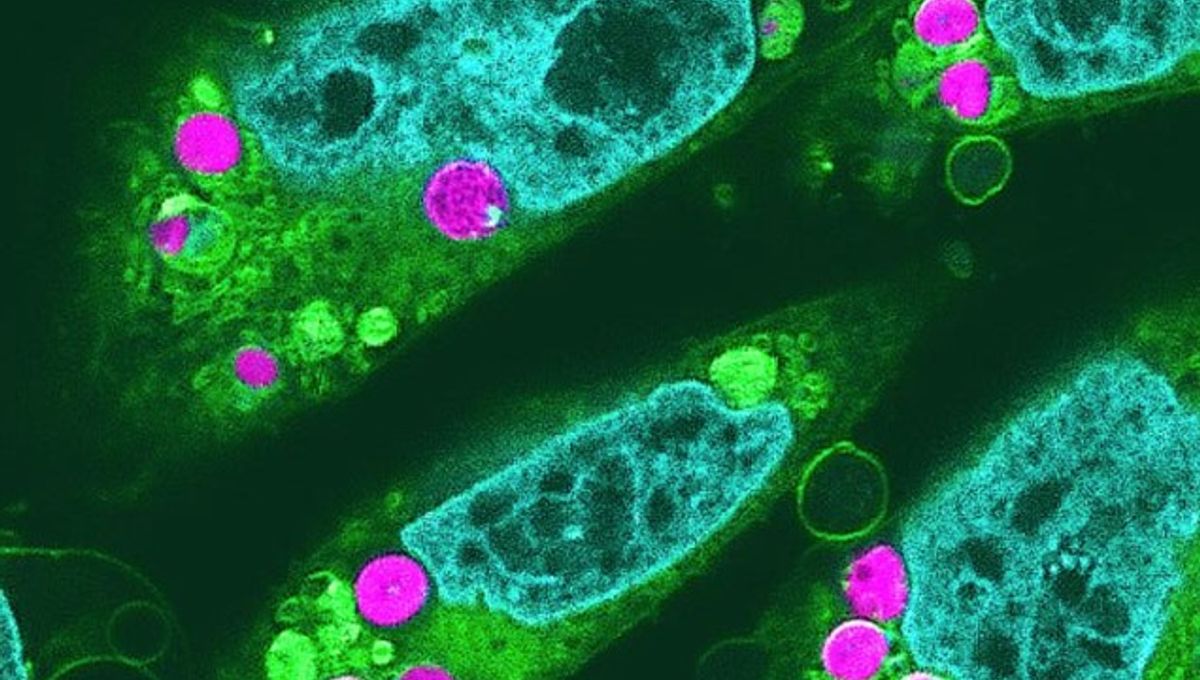
After decades of failed attempts, scientists have finally succeeded in coaxing animal cells into photosynthesizing. So far, the researchers have only managed to achieve the feat in cultured cells – which means that while sunlight-eating mammals are still some way off, we may eventually be able to use this technology for medical purposes or the creation of lab-grown meat.
Most plants (as well as algae) use chloroplasts to harness the energy of sunlight, which they mix with water and carbon dioxide to produce the carbohydrates they need to grow, releasing oxygen as a byproduct. For years, scientists have dreamed of creating photosynthetic livestock, which would be essentially free to feed and leave a negative carbon footprint.
The problem, however, is that animals’ immune systems tend to destroy chloroplasts the moment they are introduced into their cells, which is why no one has ever managed to get them to stick before. Even if these organelles could find a way to survive such an attack, they are unlikely to be able to function in the relatively hot environment of an animal cell, where temperatures are typically around 37°C (98.6°F).
To get around these issues, researchers used isolated chloroplasts from a type of primitive red algae called Cyanidioschyzon merolae – or schyzon, for short – which grows in volcanic hot springs in Italy and is capable of photosynthesizing at temperatures above 37°C. Rather than forcing these schyzon chloroplasts into animal cells, the team added them to a culture that was then fed to Chinese hamster ovary cells.
Reporting their findings in a new study, the authors reveal that shortly after this two-day co-cultivation, one percent of the cells had become “chloroplast-rich”, meaning they had taken up seven or more chloroplasts. A further 20 percent of cells were found to contain between one and three chloroplasts.
Importantly, these imported chloroplasts displayed activity for two further days, during which time their host cells grew at an accelerated rate. This indicates that photosynthesis was indeed occurring,with the chloroplasts potentially acting as a carbon source.
“Our study is the first to measure the photosynthetic activity of chloroplasts in mammalian cells,” write the authors in the study.
“We expect planimal cells to be game-changing cells, which in the future can help us achieve a ‘green transformation’ to a more carbon-neutral society,” added lead researcher Sachihiro Matsunaga in a statement.
As awesome as this breakthrough may be, further observations revealed that the imported chloroplasts began to degrade after two days and were completely destroyed by day four. Further work is therefore needed to perfect the technique, although the researchers have already seen enough to suggest that their “synthetic biology-based approach may serve as a foundation for creating artificially photosynthetic animal cells.”
“We believe this work will be useful for cellular-tissue engineering,” said Matsunaga. In particular, he sees the technology as as a potential game-changer for the production of “lab-grown tissues, such as artificial organs, artificial meat and skin sheets,”
At present, the creation of such multi-layered cellular products is complicated because a lack of oxygen between the layers inhibits cell division and therefore limits growth. However, Matsunaga says that “by mixing in chloroplast-implanted cells, oxygen could be supplied to the cells through photosynthesis, by light irradiation, thereby improving the conditions inside the tissue to enable growth.”
So while photosynthetic cattle are unlikely to be appearing on any farms in the near future, planimal cells could still have a major role to play in both food production and medicine.
The study is published in the journal Proceedings of the Japan Academy, Series B.
Source Link: Photosynthesis In Animal Cells Achieved For The First Time Using Implanted Chloroplasts